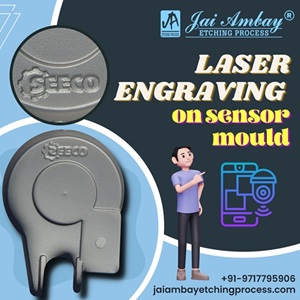


3D laser engraving is transforming the manufacturing of medical devices and tools by offering unparalleled precision, durability, and customization.
Precision as well as accuracy are part of the ‘high on demand’ in the production of medical devices and tools. Medical instruments including implants and surgical tools down to equipment used in diagnostics have very rigid dimensions in terms of safety and effectiveness. Amongst one of the revolutionary technologies that changed how these devices and tools are manufactured are 3D laser engraving. Such a process has unsurpassed precision, durability, and flexibility, making it an essential tool in the healthcare world.
In 3D laser engraving, a focused laser beam is used to cut designs or text onto a material. Unlike traditional engraving techniques, where the surface is touched by a mechanical movement, high-energy pulses from a laser in 3D laser engraving remove material but do not make contact; hence, they provide intricate details.
The technology could be applied to a wide range of materials, from metals, polymers, and ceramics to composites. This is particularly interesting for medical device manufacturing in that so many different materials are required for different tools and devices.
In the medical business, accuracy works as an important factor. Medical devices have to be followed through very close tolerances in order to get completely in line with normal functioning and to avoid patients’ safety. Minor mistakes may lead to a very dangerous outcome in every stage, be it for the sake of the device, function, or even the safety of the patients.
The 3D laser engraving provides unmatched precision allowing manufacturers to make intricate and complex designs while producing results of incredible accuracy. Indeed, laser beams tend to be extremely thin, making it perfect for fine engravings and markings usually requested on medical instruments and implants.
This process of 3D laser engraving gives the ideal response to the upsurge in the demand for medical instrument and device personalization. Since it is a digital process, manufacturers can engrave on devices quickly by unique patterns, logos, serial numbers, or text without requiring extra tooling or manual labor.
Another excellent advantage is that this flexibility allows for the personalization of medical devices to fulfill the specific needs of an individual patient or healthcare provider. Certain inscriptions could be patient-specific information or tailored marks designed to improve the function of a device.
Traceability in medical devices is highly regarded as necessity in consideration of the score of regulation from the regulatory bodies on the issue of UDI, unique identification codes. All medical devices have to be labeled with a unique code during their life cycle, from manufacturing to use in a medical procedure.
Permanent Durable Marking: Such permanent markings are though durable, meaning that the unique codes become identifiable even after going under sterilization and environmental exposures. Markings of this type are those which hold vital information regarding the identification of instruments or tools in devices, through which professionals and personnel stay updated and abide by the respective industry norms.
Medical devices and equipment are exposed to aggressive exposure through sterilization, chemical exposure, and cycling. Therefore, the codes on medical devices should be very resistant to wear and tear that may occur throughout the life of the device.
3D laser engraving gives permanent scratch-resistant engravings that maintain throughout sterilization cycles, chemicals, and heat treatments, which is crucial for sustaining traceability and functionality of the medical device.
This industry is fast paced, and manufacturers require creating good medical equipment quickly and efficiently. This speed combined with efficiency brings 3D laser engraving and reduces cutting time by half while not compromising on precision standards.
Since it is mechanized, less manual engagement is required in 3D laser engraving and can easily be integrated into an existing manufacturing flow process. This speeds up production, and the elimination of huge amounts of manual labor and excess tooling reduces costs as well.
High-precision, rugged, and customized products manufactured by 3D laser engraving in medical tool and equipment are revolutionizing the industry. Permanent engravings on various materials can be done with considerable precision, making a product ideally suited for traceability, compliance, and patient safety in the medical field.
